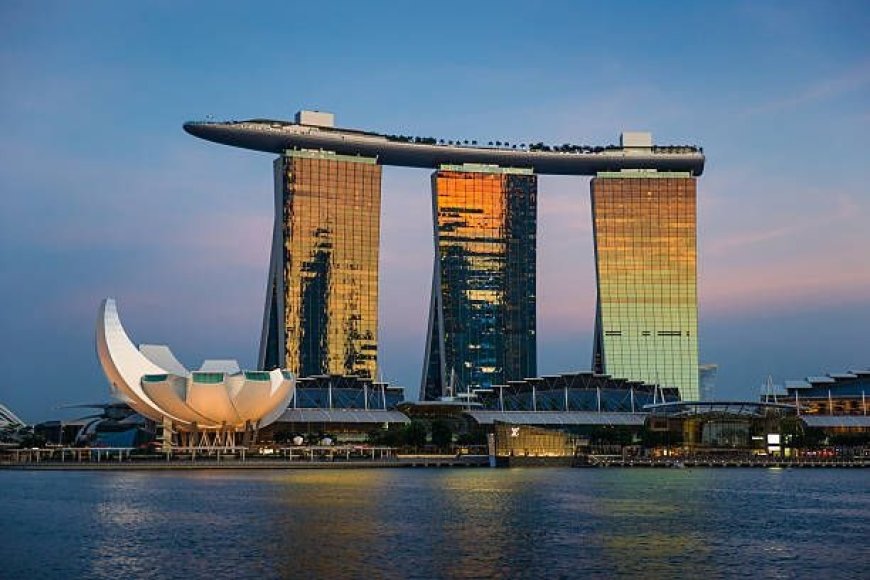Singapore’s Rich History and Heritage

Singapore, often celebrated for its futuristic skyline and cosmopolitan lifestyle, is a country steeped in rich history and heritage. Beneath its modern exterior lies a story of resilience, cultural diversity, and transformation that has shaped the city-state into the thriving metropolis it is today. From its early days as a humble fishing village to its emergence as a global economic powerhouse, Singapore’s journey through history is a fascinating one. In this article, we will delve into the key milestones and cultural elements that have contributed to the unique identity of Singapore.
The Foundation of Modern Singapore
The story of modern Singapore begins in 1819 when Sir Stamford Raffles, an agent of the British East India Company, established a trading post on the island. Recognizing the strategic location of Singapore along the major shipping routes, Raffles envisioned the island as a free port that would attract traders from all over the world. This marked the beginning of Singapore's transformation into a major global trading hub.
In the early years, Singapore’s population grew rapidly as immigrants from China, India, and the Malay Archipelago flocked to the island in search of better opportunities. This influx of people from different cultural backgrounds laid the foundation for Singapore’s multicultural society, which remains one of its defining characteristics today. The harmonious coexistence of various ethnic communities is a testament to Singapore’s commitment to preserving its cultural heritage while embracing progress.
For travelers interested in exploring Singapore’s historical roots, a Singapore 5 days package offers an ideal opportunity to immerse yourself in the city’s rich heritage. From visiting the colonial-era buildings to exploring vibrant ethnic neighborhoods, this package allows you to experience the essence of Singapore’s history in just a few days.
The Cultural Mosaic of Singapore
Singapore’s cultural diversity is reflected in its vibrant neighborhoods, each with its unique charm and historical significance. Chinatown, Little India, and Kampong Glam are among the most iconic areas where visitors can experience the rich heritage of Singapore’s Chinese, Indian, and Malay communities, respectively.
In Chinatown, the blend of old and new is palpable. Traditional shophouses stand side by side with modern skyscrapers, creating a picturesque contrast that tells the story of Singapore’s evolution. The area is also home to the Buddha Tooth Relic Temple, a stunning example of Chinese architecture and a significant religious site for the Buddhist community.
Little India, on the other hand, is a sensory overload of colors, sounds, and aromas. This vibrant neighborhood is a celebration of Indian culture, with its bustling markets, ornate temples, and lively festivals. Visitors can explore the Sri Veeramakaliamman Temple, one of the oldest Hindu temples in Singapore, or simply take a stroll through the streets lined with shops selling traditional Indian spices, textiles, and jewelry.
Kampong Glam, the historic Malay-Muslim quarter, offers a glimpse into Singapore’s Malay heritage. The Sultan Mosque, with its golden dome and imposing presence, is the focal point of the area and a symbol of the Malay-Muslim community’s contributions to Singapore’s cultural landscape. The neighborhood is also known for its eclectic mix of cafes, boutiques, and art galleries, making it a popular destination for both locals and tourists.
For those on a Singapore 5 days package, these neighborhoods provide a perfect introduction to the city’s cultural diversity. Each area offers a unique experience that highlights the different facets of Singapore’s rich heritage.
The Colonial Legacy
Singapore’s colonial past has left an indelible mark on its architecture, institutions, and social fabric. The British colonial period, which lasted until Singapore’s independence in 1965, was a time of significant development and modernization. Many of the iconic landmarks that define Singapore’s skyline today were built during this era.
One of the most prominent colonial-era buildings is the Raffles Hotel, named after Sir Stamford Raffles. Opened in 1887, this luxurious hotel has hosted numerous dignitaries and celebrities over the years and remains a symbol of Singapore’s colonial heritage. The hotel’s timeless elegance and historic charm make it a must-visit for those interested in the city’s past.
Another notable colonial landmark is the Old Parliament House, now known as The Arts House. This building, completed in 1827, served as the seat of the Singaporean government until 1999 and is the oldest surviving government building in the city. Today, it functions as an arts and cultural center, hosting exhibitions, performances, and literary events.
The influence of British colonialism is also evident in Singapore’s legal and educational systems. Institutions such as the Supreme Court and the National University of Singapore were established during the colonial period and continue to play a vital role in the country’s development.
The Road to Independence
The journey to independence was a pivotal chapter in Singapore’s history. Following the end of World War II, Singapore became a self-governing state within the British Empire in 1959, with Lee Kuan Yew as its first Prime Minister. However, it wasn’t until 1963 that Singapore gained full independence as part of the Federation of Malaysia.
The merger with Malaysia was short-lived, and in 1965, Singapore became a sovereign nation. This marked the beginning of a new era for the fledgling nation, as it faced the challenges of building a stable economy, creating jobs, and fostering social cohesion among its diverse population.
Under the leadership of Lee Kuan Yew, Singapore embarked on an ambitious nation-building project that transformed the country into a global economic powerhouse. The government’s emphasis on education, infrastructure, and industrialization laid the groundwork for Singapore’s rapid development. Today, the country is recognized for its high standard of living, efficient governance, and strong economy.
Preserving Heritage in a Modern City
As Singapore continues to grow and modernize, preserving its cultural heritage has become an important priority. The city-state’s rapid urbanization has led to the loss of some historical buildings and sites, but efforts have been made to protect and restore significant heritage landmarks.
The Singaporean government, through agencies such as the National Heritage Board, has implemented various initiatives to promote the conservation of heritage buildings and the documentation of intangible cultural heritage. Programs such as the Singapore HeritageFest and the Singapore Night Festival celebrate the city’s history and culture, offering locals and visitors alike the opportunity to engage with Singapore’s rich heritage in meaningful ways.
In addition to government-led initiatives, the private sector and local communities also play a crucial role in heritage preservation. Organizations and individuals have come together to restore and maintain historical buildings, such as the Baba House in Chinatown, a beautifully restored Peranakan heritage home that offers a glimpse into the lives of the Straits Chinese community in the early 20th century.
Conclusion
Singapore’s rich history and heritage are integral to its identity as a nation. From its early days as a fishing village to its rise as a global economic powerhouse, Singapore’s journey through history is a story of resilience, diversity, and transformation. The city’s multicultural society, colonial legacy, and commitment to preserving its heritage are all testaments to the unique character of this island nation.
For visitors, a Singapore 5 days package provides a comprehensive experience of the city’s historical and cultural treasures. Whether exploring the vibrant neighborhoods of Chinatown, Little India, and Kampong Glam, or visiting iconic colonial landmarks like the Raffles Hotel and The Arts House, there is no shortage of opportunities to connect with Singapore’s past. As Singapore continues to modernize, its rich history and heritage will remain a source of pride and inspiration for future generations.
What's Your Reaction?
 Like
0
Like
0
 Dislike
0
Dislike
0
 Love
0
Love
0
 Funny
0
Funny
0
 Angry
0
Angry
0
 Sad
0
Sad
0
 Wow
0
Wow
0
Related Posts
UNLOCKING SAVINGS: SPECIAL DISCOUNTS AND PROMOTIONS FOR...
nicks Nov 30, -0001 0
Ontario International Airport Phone Number
askforairlines Nov 30, -0001 0



















































